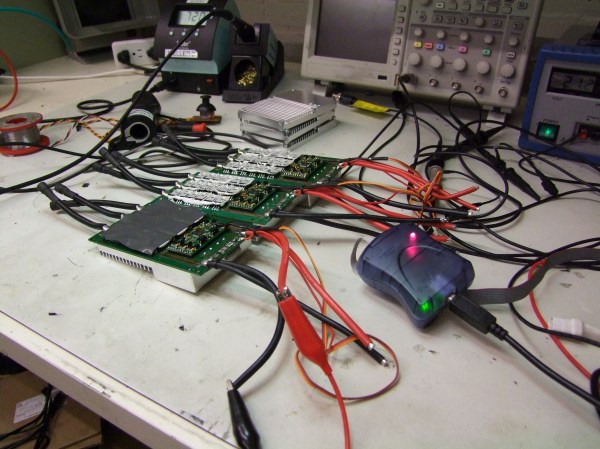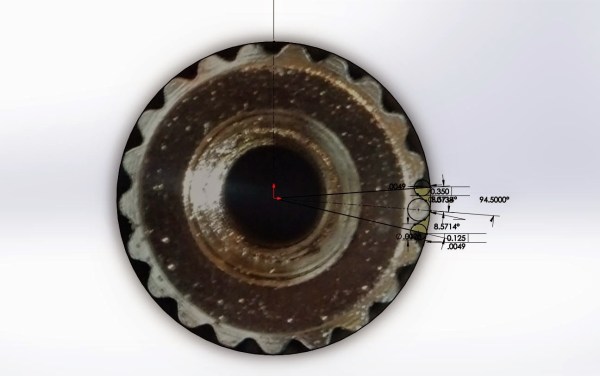[professor churlz] wrote in to let us know his results with modifying radio control ESCs (Electronic Speed Controllers) for use in a large (250lb range) BattleBot’s drivetrain. It’s a very long and involved build log entry that is chock-full of details and background.
If you want something spinning hard and fast, brushless is where it’s at. Brushless motors offer much better power-to-weight ratios compared to brushed DC motors, but some applications – like a large robot’s drivetrain – are less straightforward than others. One of the biggest issues is control. Inexpensive brushless motors are promising, but as [professor churlz] puts it, “hobby motor control equipment is not well suited for the task. Usually created for model airplanes, the controllers are lightly built, rated to an inch of the components’ lives using unrealistic methods, and usually do not feature reversing or the ability to maintain torque at low speeds and near-stall conditions, which is where DC motors shine.” Taking into account the inertia of a 243 lb robot is a factor as well – the controller and motor want to start moving immediately, but the heavy robot on the other side of it doesn’t. The answer was a mixture of hardware and firmware tweaking with a lot of testing.
Continue reading “Hacking R/C Brushless Motor Controllers For Use In Big Robots”













